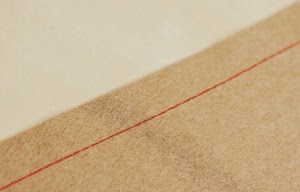When do you use it?
Basting is used anytime you want to sew two layers together with the option to remove the stitching later. Basting is also used for fitting. You can baste your seams together, try on the garment and adjust if needed before sewing the seams permanently. Basting hems in place makes them easier to sew. Baste along folded edges before pressing to hold them securely in place. Basting is a good way to test and check areas of the garment first, before sewing it in place permanently.
How do you decide when to Baste by Hand or by Machine?
Machine basting is faster, more even and slightly stronger due to the smaller stitches. Hand basting is looser and easier to remove. Hand basting gives you greater control over the fabric as you work and allows you to reposition the layers if they start to slip. Machine basting may leave needle holes when it’s removed, while hand basting is less likely to leave any marks on the fabric.
Tips + Notes
- Baste with contrast thread so it’s easy to see and easy to remove.
- Choose hand basting over machine basting whenever you have the time for more accuracy.
- Keep a handsewing needle threaded in a bright color near your sewing station for quick and easy hand basting! Having the materials ready will make it feel less like a chore.
- To remove basting stitches, gently slide the point of a seam ripper under a basting stitch and slice through the thread only. Be careful not to cut your fabric! Repeat every 2″–3″ (5.1cm–7.6cm) along the length of the basting stitches. Pull out the basting threads between cuts, using the point of the seam ripper to lift the threads.
How to Baste by Machine
- Set your sewing machine to sew with a long stitch length, about 4 mm. The longer the stitches, the looser your machine basting will be. Starting at one end of your work, machine stitch through all layers. Do not backstitch!
- Remove the garment from the machine and trim the threads. Leave long tails so the basting does not come undone.

0 comments:
Post a Comment